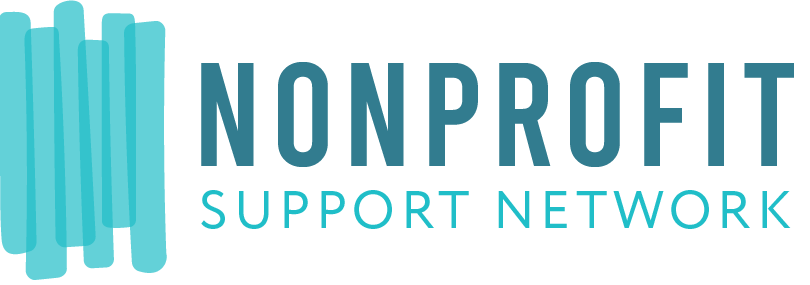Nonprofit Wellness: From burnout to wellbeing to engagement
Let’s level set. The terms wellness and wellbeing have become so widely used that we no longer think about what they really mean. We’ve come to accept that they are related to anything health-related. But when I use the terms wellness or wellbeing I refer to the hard data that Gallup has provided us on the factors that contribute to a good life. “Connected or associated with anything health related”
Gallup’s research on wellbeing, which spans many years and countries across the globe, has revealed to us that wellbeing is comprised of 5 essential elements:
Career (or purpose)
Social
Financial
Physical
Community
In their books Wellbeing: The 5 Essential Elements” and “Wellbeing at Work: How to Build Resilient and Thriving Teams they outline the specifics of these 5 areas. It should be noted that the measure of these terms is subjective. For example, physical wellbeing is defined as “having the energy to do what you need to do each day.” In addition to Gallup’s outline of wellbeing, it’s important to keep in mind that wellness is a proactive, preventive practice. By contrast, we see in our world today the term ‘wellness-visit’ used in conjunction with chronic disease management… or dog food. Obviously, at this point we’re just using the term in place of the word “good”.
What’s most striking about Gallup’s findings in the area of wellbeing is that career wellbeing is the most impactful to a person’s overall health and longevity. I’ll say that another way, your opportunity to live out your life connected to a sense of purpose is more impactful than your weight or cholesterol numbers. For some of us our career provides great purpose and meaning, and having a workplace that supports that is critical. For others, a job is just a means to an end and we find a greater sense of purpose in other outlets, such as our family, church, or the community we live in. This fact that our career or connection to a sense of purpose has such a profound impact on one’s wellbeing is critical for nonprofit leaders to understand and embrace.
What happens when you find purpose and meaning in serving others? Or in helping fulfill the mission of your non-profit? You feel fulfilled, accomplished. You feel good knowing you’re helping the community or helping those with less resources than you. Maybe you feel good knowing you’re living a life of obedience to a higher power. It’s a rewarding and healthy way to live life.
With this fulfillment, we can also experience any number of hard emotions that come from fatigue and/or lead to burnout. Helplessness, resentment, ongoing chronic stress of the never-ending needs, feeling unappreciated… the list goes on and on. Understanding that burnout and engagement are two sides of the same coin, so to speak, can help us maintain a vigilant proactive, preventive practice of our wellbeing.
Burnout, comprised of emotional exhaustion, detachment, and a reduction in your impact, can be proactively combated by fostering elements of engagement. Engagement is about:
Proactively maintaining your energy (mental, emotional, and physical). Think “eat, sleep, move” as a foundation to your energy maintenance practices. For a great handbook on energy maintenance read Gallup’s book “Are You Fully Charged?”
Maintaining clarity about and balance in your involvement. What strengths do you bring to the team? What are your limitations? Is your leadership giving you clear expectations so you can operate at maximum efficiency? Is saying ‘no’ an option?
Fostering your sense of efficacy. This is done by having clear metrics of what success is and what it isn’t. Sometimes success is running the program regardless of the outcome. Success should never be pinned solely on the behaviors of others. When we do this we begin a downward spiral of low self-efficacy, which ultimately leads to quitting, compassion fatigue or burnout.
If you haven’t recently (or even if you have), make time to take a step back and assess your culture. Does it intentionally work to maintain a strong sense of engagement? Does it make space and time for proactive energy-giving practices and energy management? Is success clearly defined with realistic and attainable goals? Listen to those who have left the organization or those who look in from the outside who can give an unbiased perspective of how they see your culture.
Finally, since career wellbeing is the most impactful of the five essential elements, make sure you’re providing your team opportunities for growth and self-reflection. Whether it’s personality type tests or building in allowances for further trainings and certifications, team members in mission-driven organizations have a strong desire to grow and get better and when they know they’re being invested in they feel seen and appreciated. In the workplace, this is where wellbeing can find roots that will grow for years to come.
Meet the Author: Nathan Taylor
Nathan Taylor spent 12 years building and implementing employee wellbeing solutions in a non-profit setting. That journey allowed him to realize that employee wellbeing is the result of intentionally and strategically developing and growing yourself and your team to be the best they can be! The work of "employee wellness" is about the fusion of worker wellbeing and organizational excellence coming together to optimize human and organizational potential. He received his MS in Wellness Management from Ball State University. During his studies at Ball State, he devoted his thesis work to shedding light on employee burnout and engagement in helping professions. Currently, he works as a career coach at the Ivy Tech Muncie campus and is an adjunct instructor for Ball State University in the department of nutrition and health sciences. You can reach Nathan by email at noct20@gmail.com.






